https://www.bbc.co.uk/news/technology-59520815
https://www.bbc.co.uk/news/technology-59520815
https://www.artforum.com/print/reviews/201206/steve-mcqueen-31262

For his project Blues Before Sunrise, organized by the Stedelijk Museum in Amsterdam this past March, British artist and filmmaker Steve McQueen fitted all 275 lights in the Vondelpark with blue filters (Lee #075, Evening Blue). Suddenly Amsterdam’s equivalent of Central Park was bathed in intense midnight blue each evening and night. Dog owners lost track of their four-footed companions, evening joggers faded to dim phantoms, and the cyclists who, in a proud Amsterdam tradition, refuse to use lights of their own whooshed past each other in the azure glow like birds over a darkened sea. Many visitors must have felt they had unexpectedly (and perhaps inconveniently) walked onto the set of a movie, but without knowing what part to play or what the other actors were likely to do.
It may seem strange that McQueen, known for films and film installations, suddenly produced a large three-dimensional work. But his enduring interest in the cinema is actually what made this project such a natural step for him. In fact, Blues Before Sunrise brought together all the major strands in McQueen’s art—including the fascination with light that is especially apparent in his two feature films, Hunger (2008) and Shame (2011). McQueen has said that one inspiration for this work was the song that gave it its title, which was recorded by Leroy Carr and Scrapper Blackwell in 1934 (“Seems like everybody, everybody’s down on me / I’m gonna cast my troubles down in the deep blue sea”). But McQueen’s Blues also seemed to allude to another work of art with a musical title, David Hammons’s legendary Concerto in Black and Blue, 2002. All Hammons did to create his Concerto was to darken New York’s Ace Gallery; the work was performed by the visitors, who were given small blue LED flashlights with which they could illuminate the space. This gave rise to a jittery, mysterious, and unbridled symphony of light—Hammons’s Concerto changed constantly, never remaining the same, even for a moment. In the Vondelpark, too, the color and intensity of the light changed constantly, depending on the weather, the time of night, and the visitor’s location. McQueen’s Blues, like Hammons’s, were never the same twice. With this ever-changing light, McQueen subtly alluded to the crucial “blues feeling”: the sense that something’s playing with your emotions and it’s stronger than you are.
Yet a more powerful association was between Blues Before Sunrise and another work concerning a park, McQueen’s own film Giardini, 2009, made for the British pavilion at that year’s Venice Biennale. McQueen filmed Giardini in the Biennale Gardens at the very end of winter, when no events were taking place in the park and nature was slowly rebounding: Plants were starting to flourish again, insects were leading their fragile lives, and wind and rain were gradually leaving their mark on the site. Yet the true power of Giardini lay in symbolic elements that McQueen himself introduced, especially the lean, abandoned greyhounds scavenging outside the empty pavilions. Part of McQueen’s thinking was that these dogs are normally killed at the end of their racing careers, and are therefore symbols of death.
It was precisely that atmosphere, in which melancholy prevailed and reality became attenuated, that McQueen transferred to the Amsterdam night. As you walked through the park, you became aware that in that moment, everything was wavering, that your usual sense of control had been swept away. In hindsight, McQueen seems to have done his work a little too effectively. After thirteen days, five days before the installation was supposed to end, the City of Amsterdam decided to terminate Blues Before Sunrise “for traffic safety reasons”—it seems an accident had occurred in the eerie blue light. Who knows whether the project was really to blame, but in any case, McQueen had clearly managed to disorder the experience of the Vondelpark.
https://www.theguardian.com/artanddesign/2015/feb/24/forensics-the-anatomy-of-crime-wellcome-collection-female-artists
https://www.emilyspeed.co.uk/section.php?name=works
https://www.cellprojects.org/exhibitions/ghislaine-leung
https://www.bbc.co.uk/news/science-environment-45486844
https://www.cardiff.ac.uk/people/view/81120-boddy-lynne
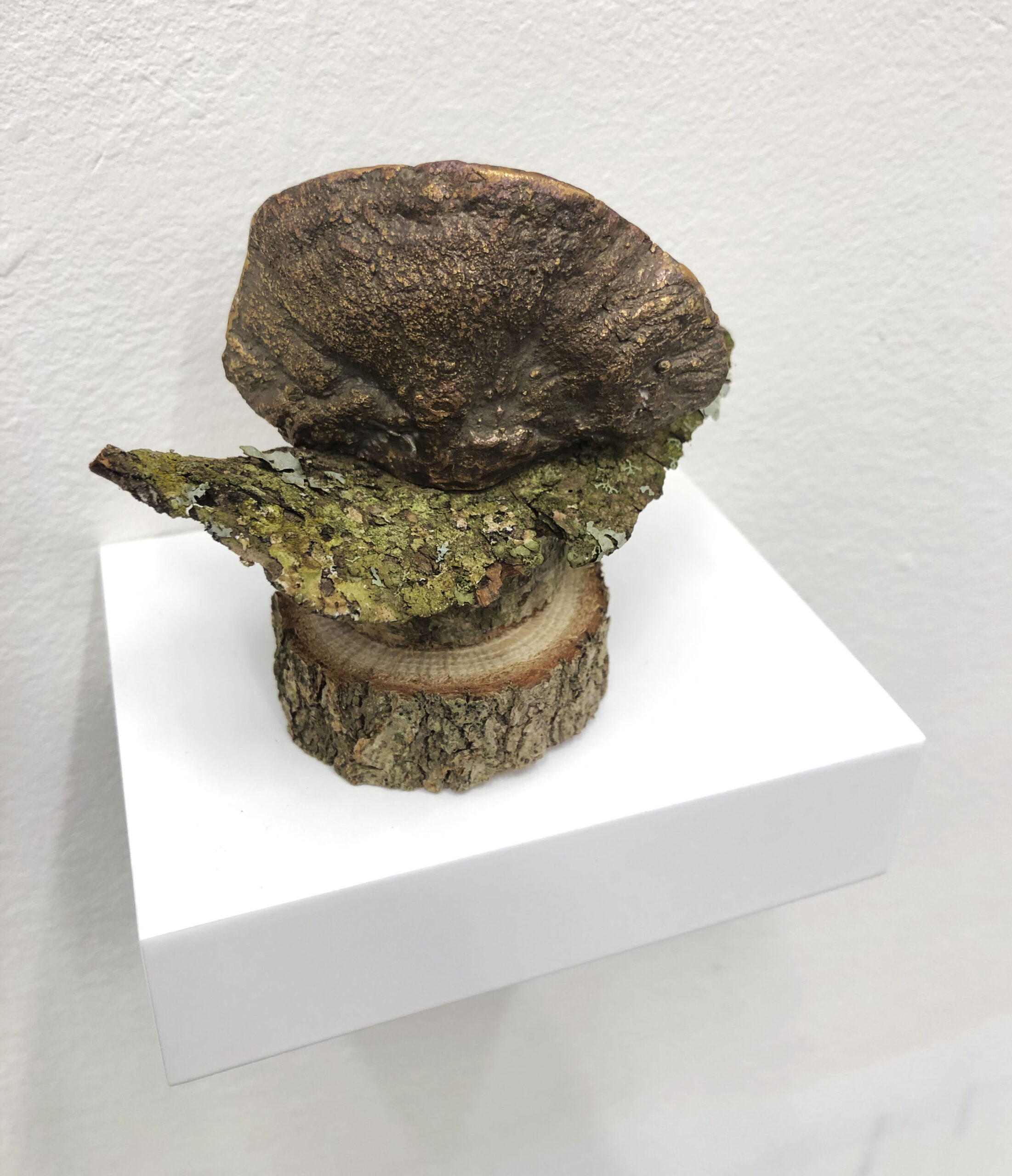
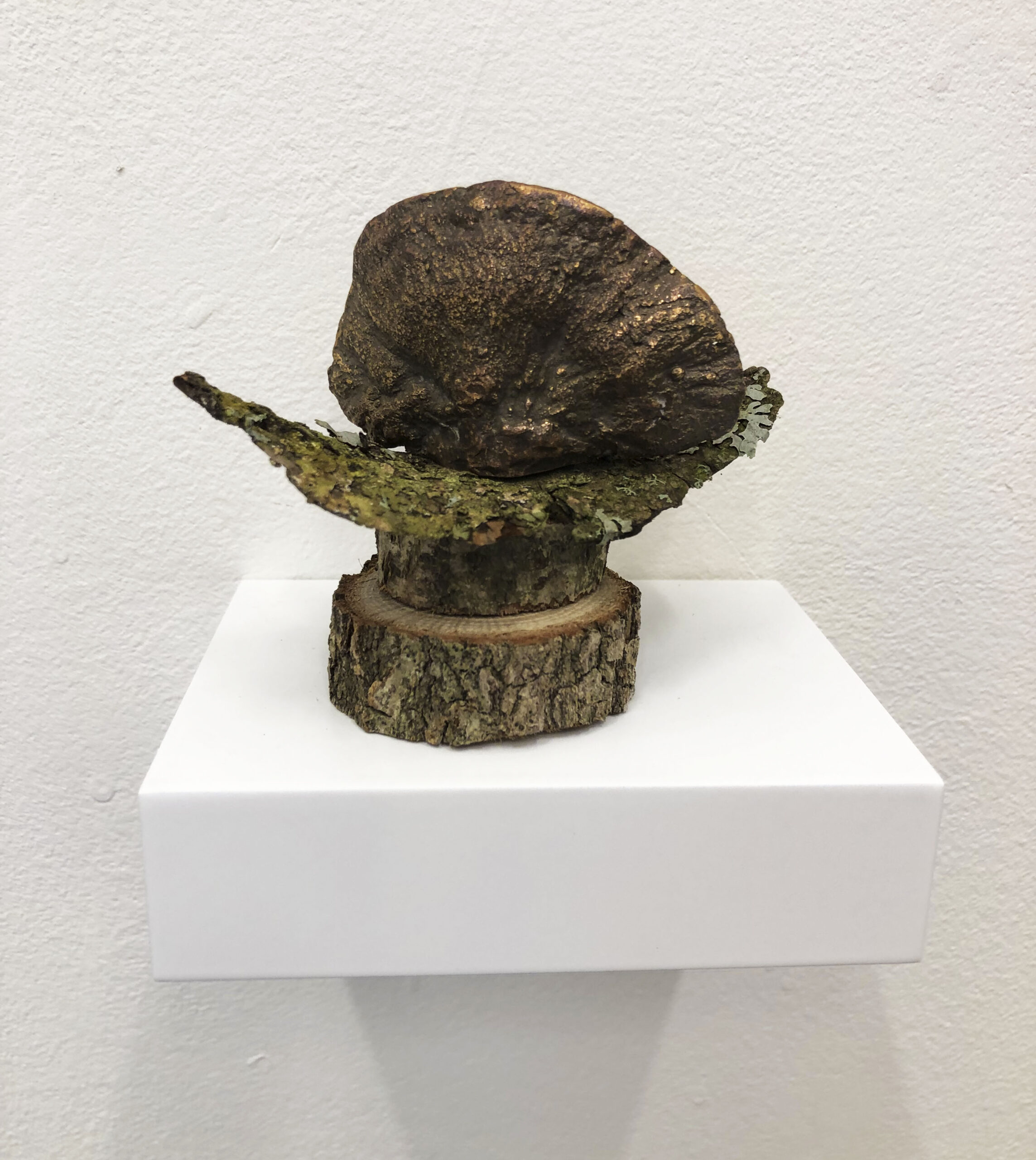
Experimenting with display ideas for my bronze mushroom sculptures. Commenting on the balancing act of nature, how each element affects the next. The complex layers that make up our natural world.
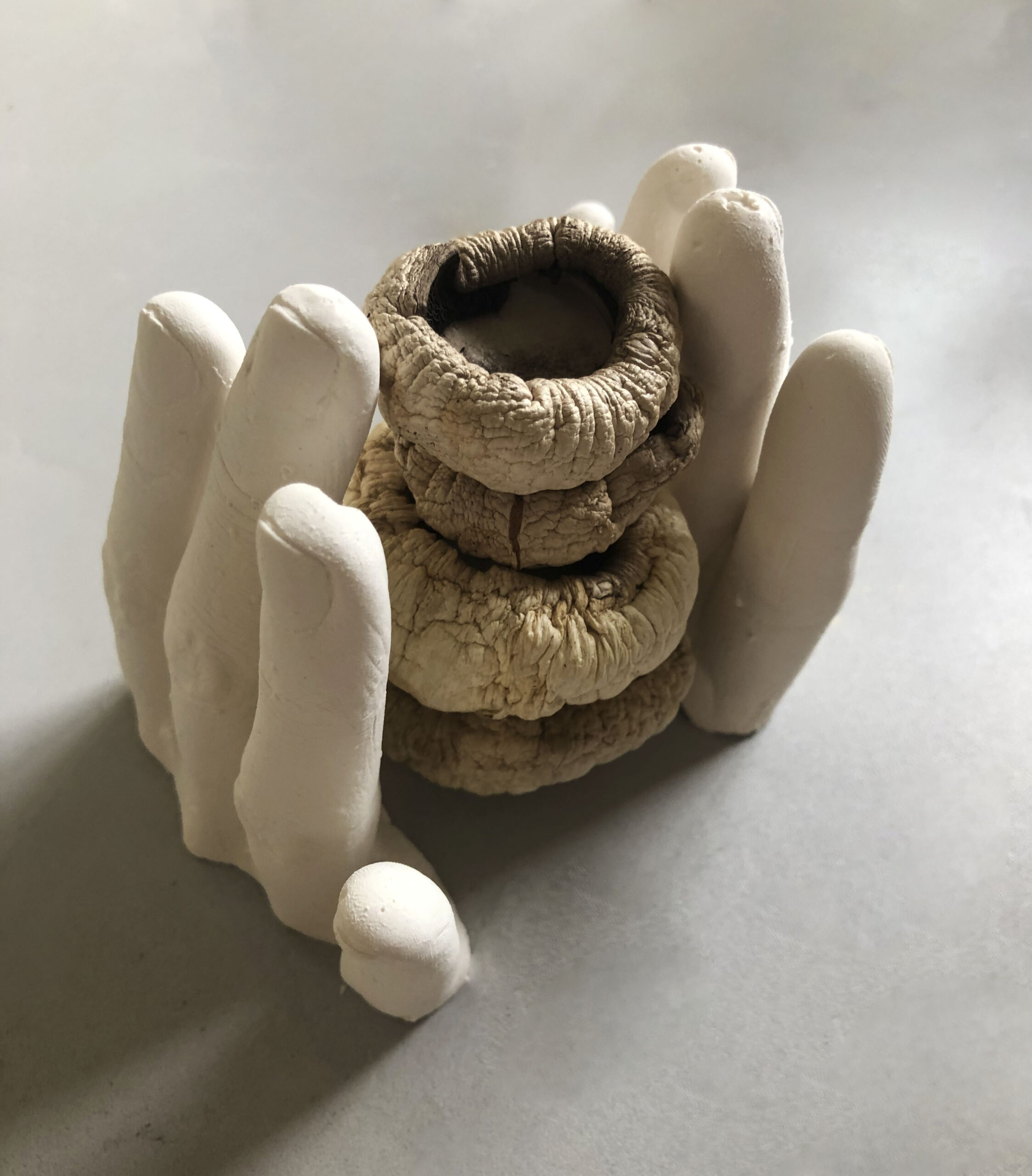
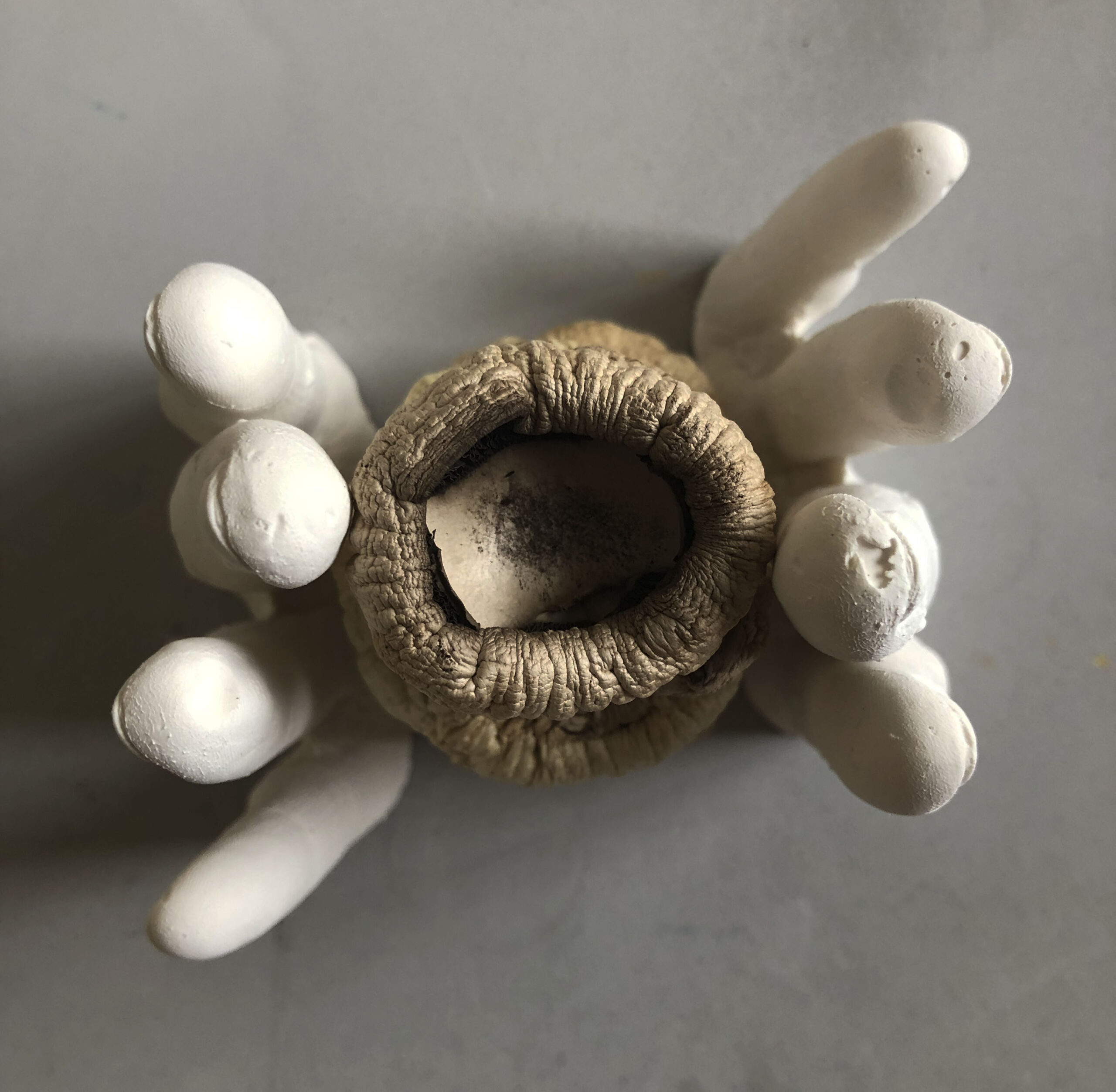
Concept: the balance of nature, and how it rests in our hands. A comment on the precariousness of nature, and how our input impacts it.
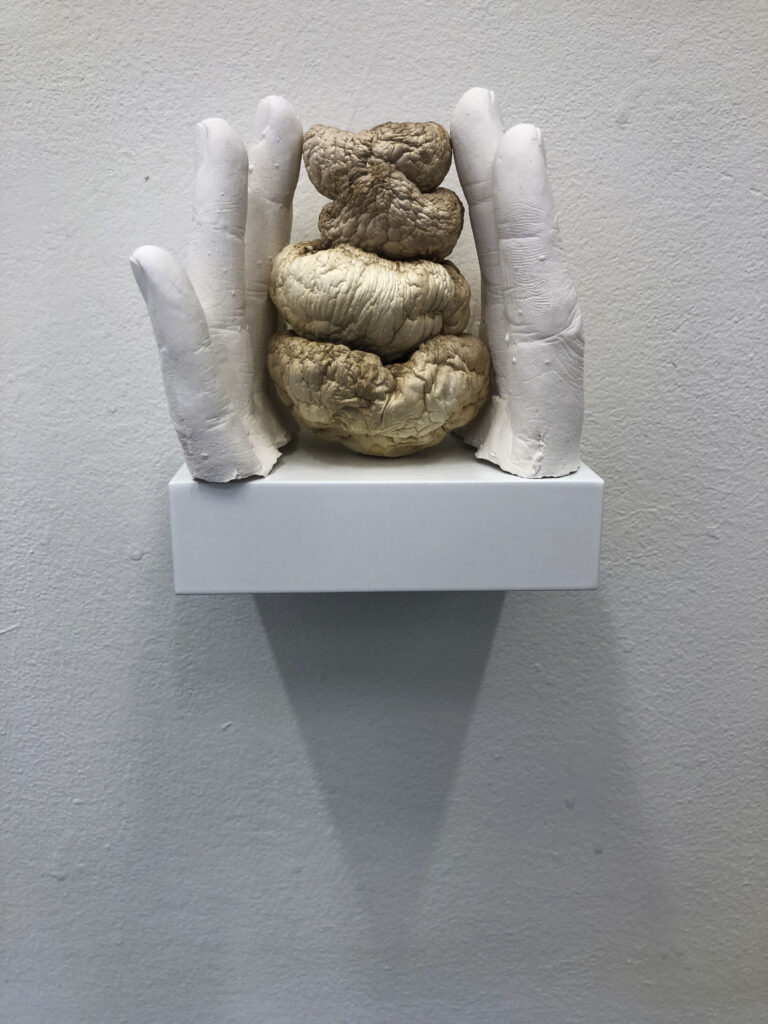
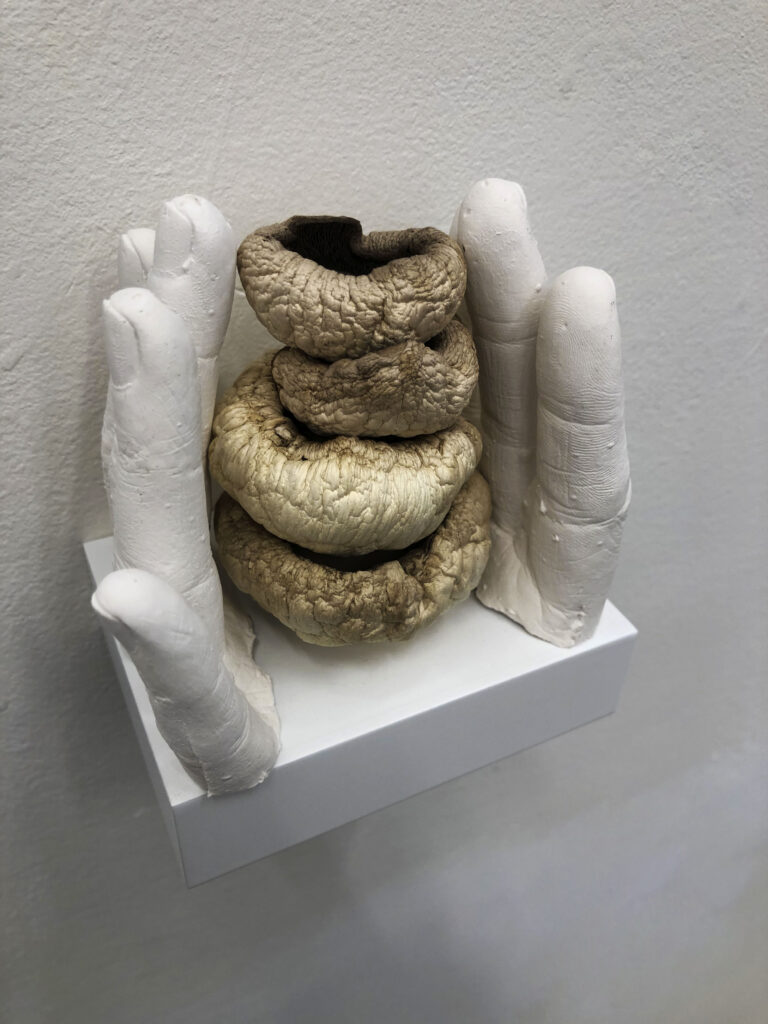
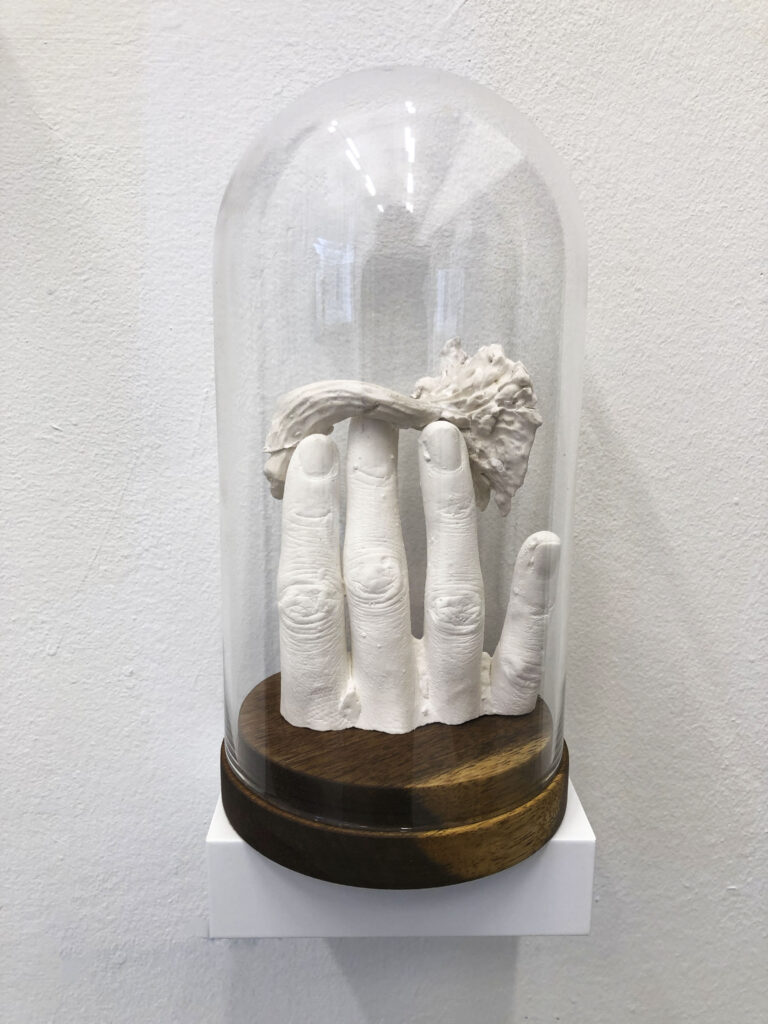
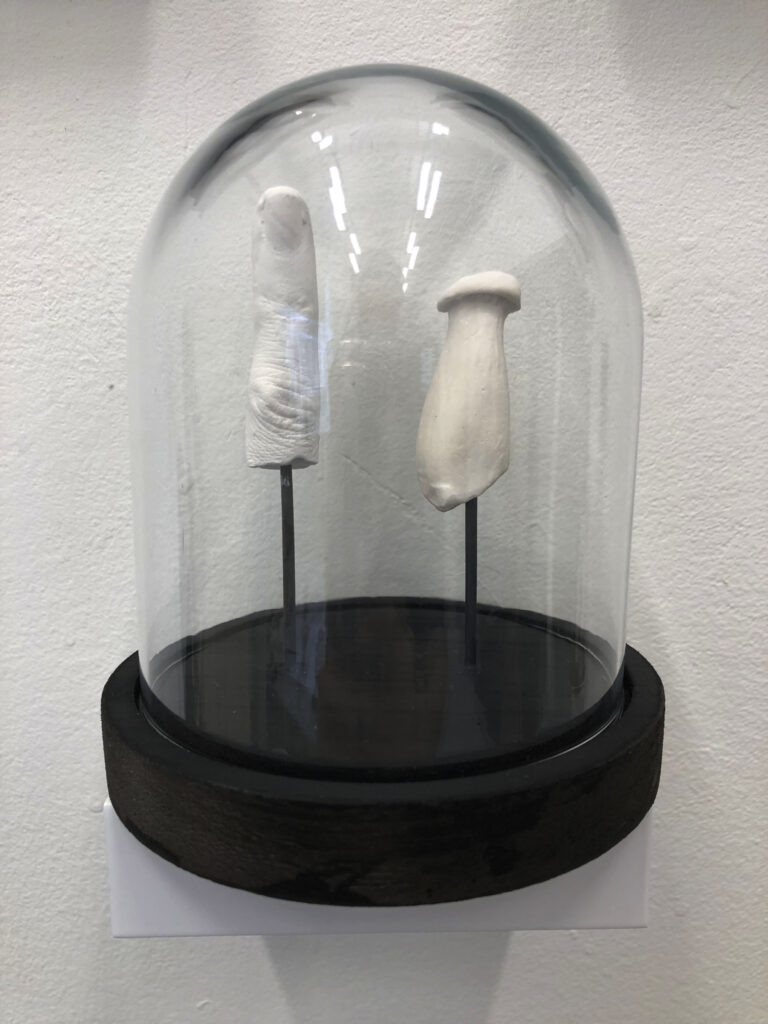
Further exploration around the theme of our connection with nature.
Presenting them in bell jars, similar to a museum/science exhibition. Act of preserving, viewing, retaining.
This is a work in progress.
Concept: the link between humans and nature.
I am always learning new things about nature. Whilst making spore prints with mushrooms, I felt that they were similar to our fingerprints. Each spore print is unique, just like our fingerprints.
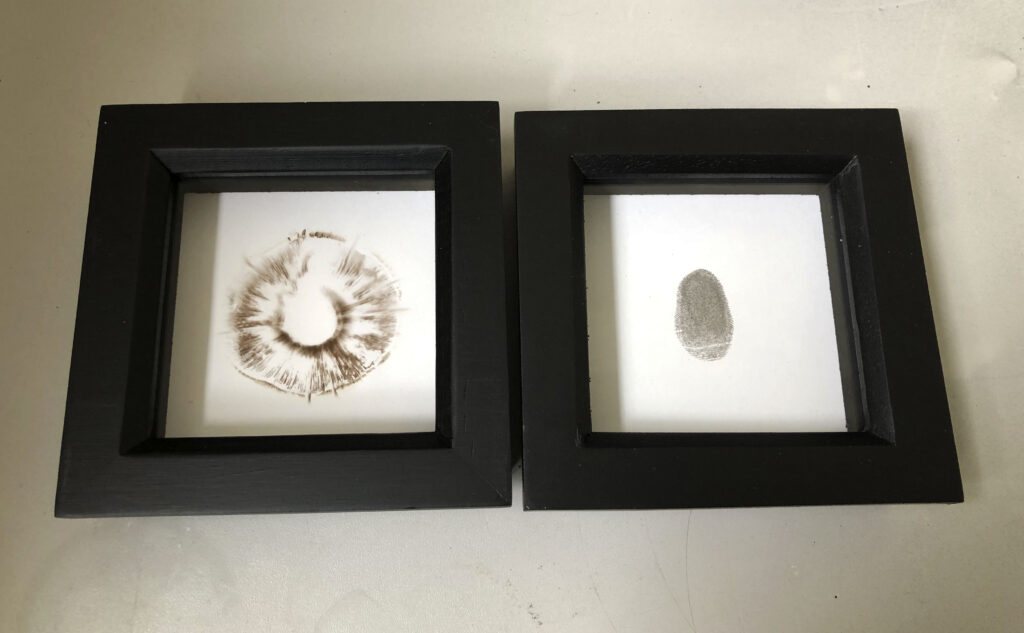

As I thought about this more, I discovered further similarities. Like that of tree rings and otoliths (the inner ear bones of fish). Each ring in a tree stump represents a year of that trees life; which is the same with rings in a otolith:
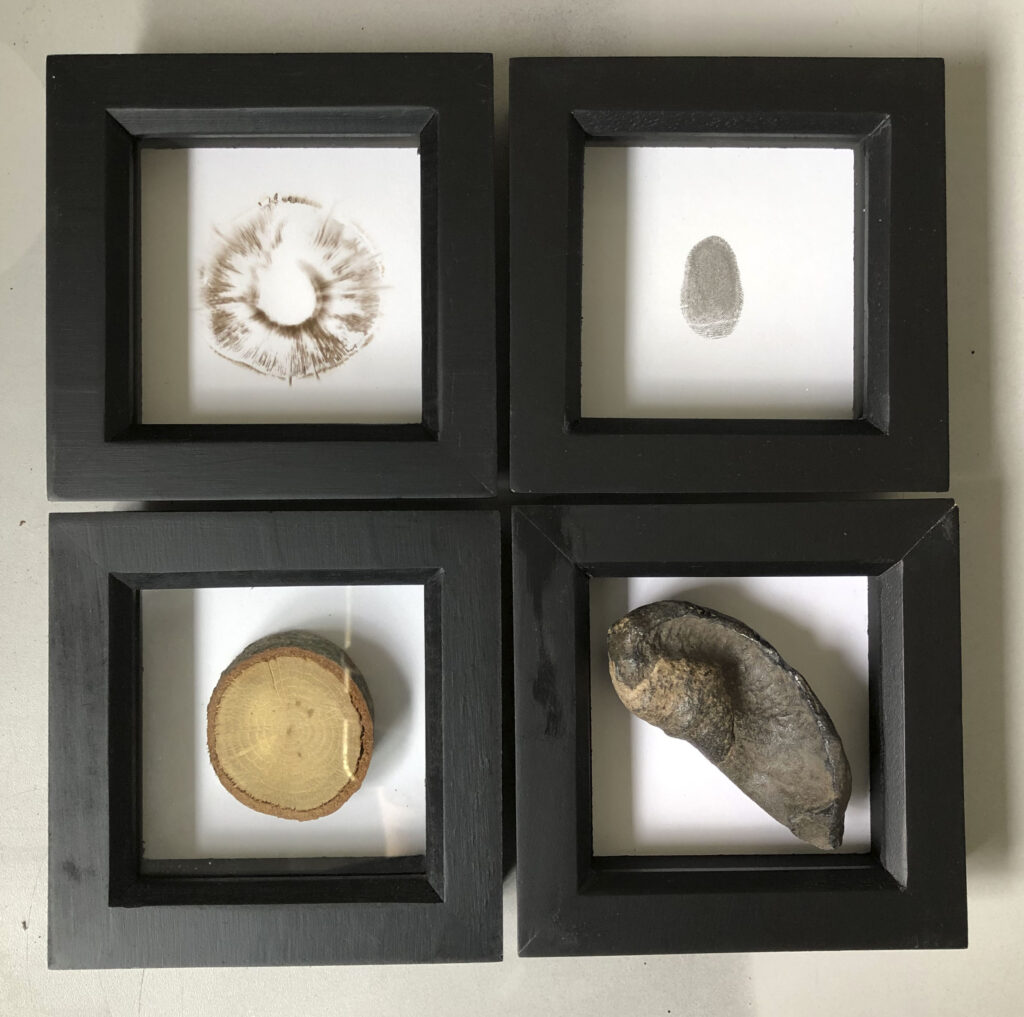
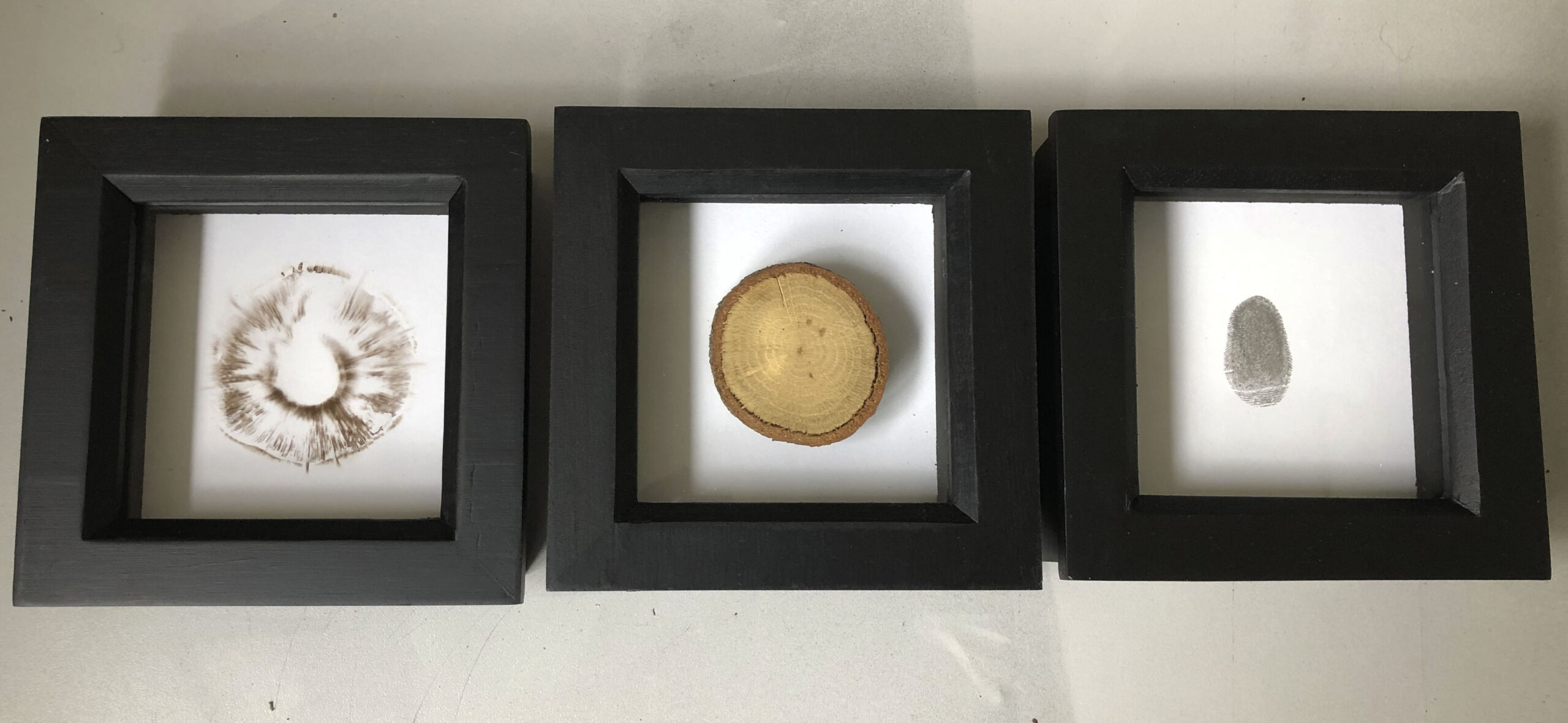
I wanted to create something that showed these similarities, and so framed examples. If I were to place this into a gallery setting I would provide information on what each example is. It would be like a museum/science exhibition, educational as well as visually pleasing. I want to reveal to others the connections that happen in my mind when I am learning about nature and how closely our lives are intwined.
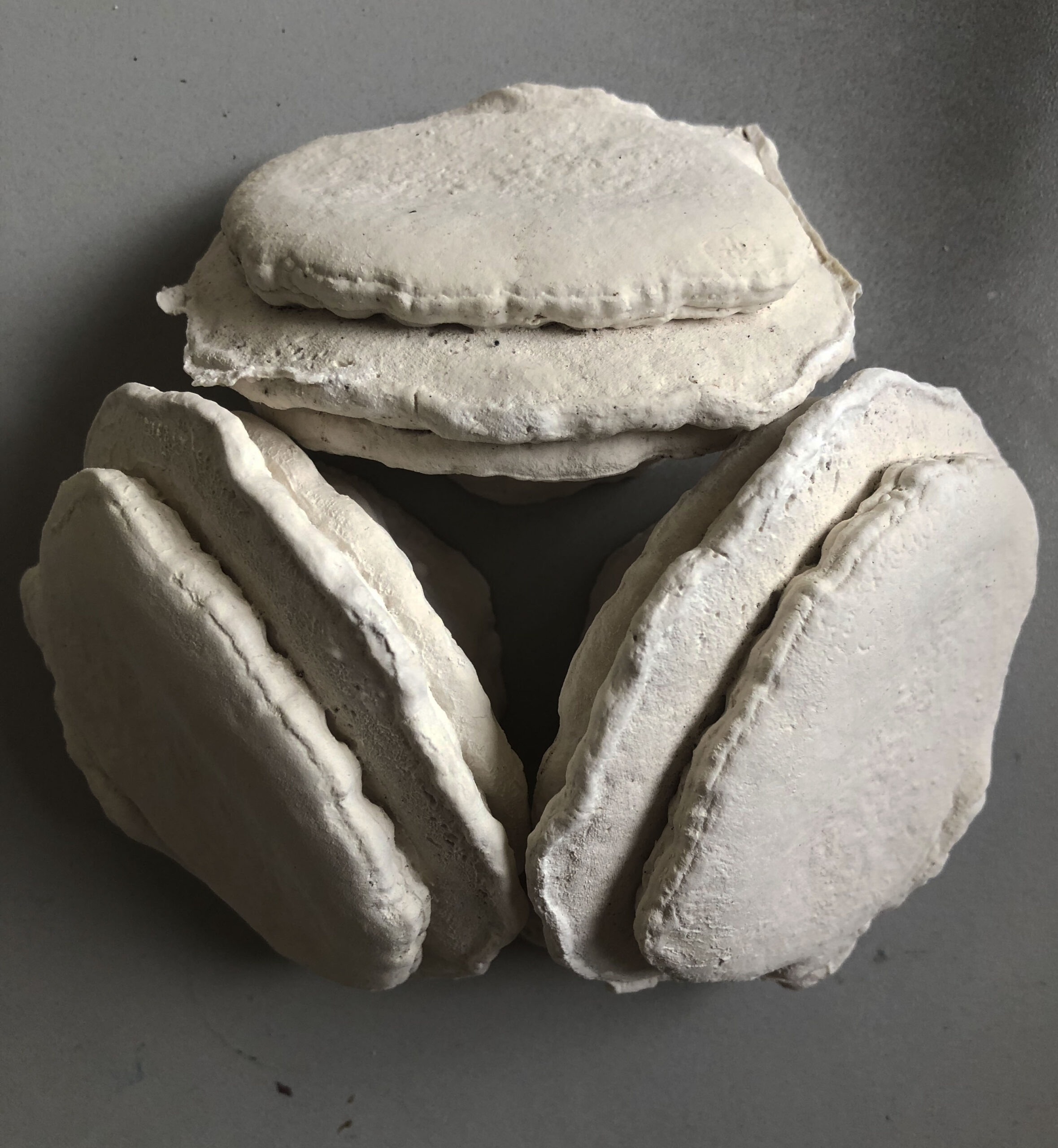
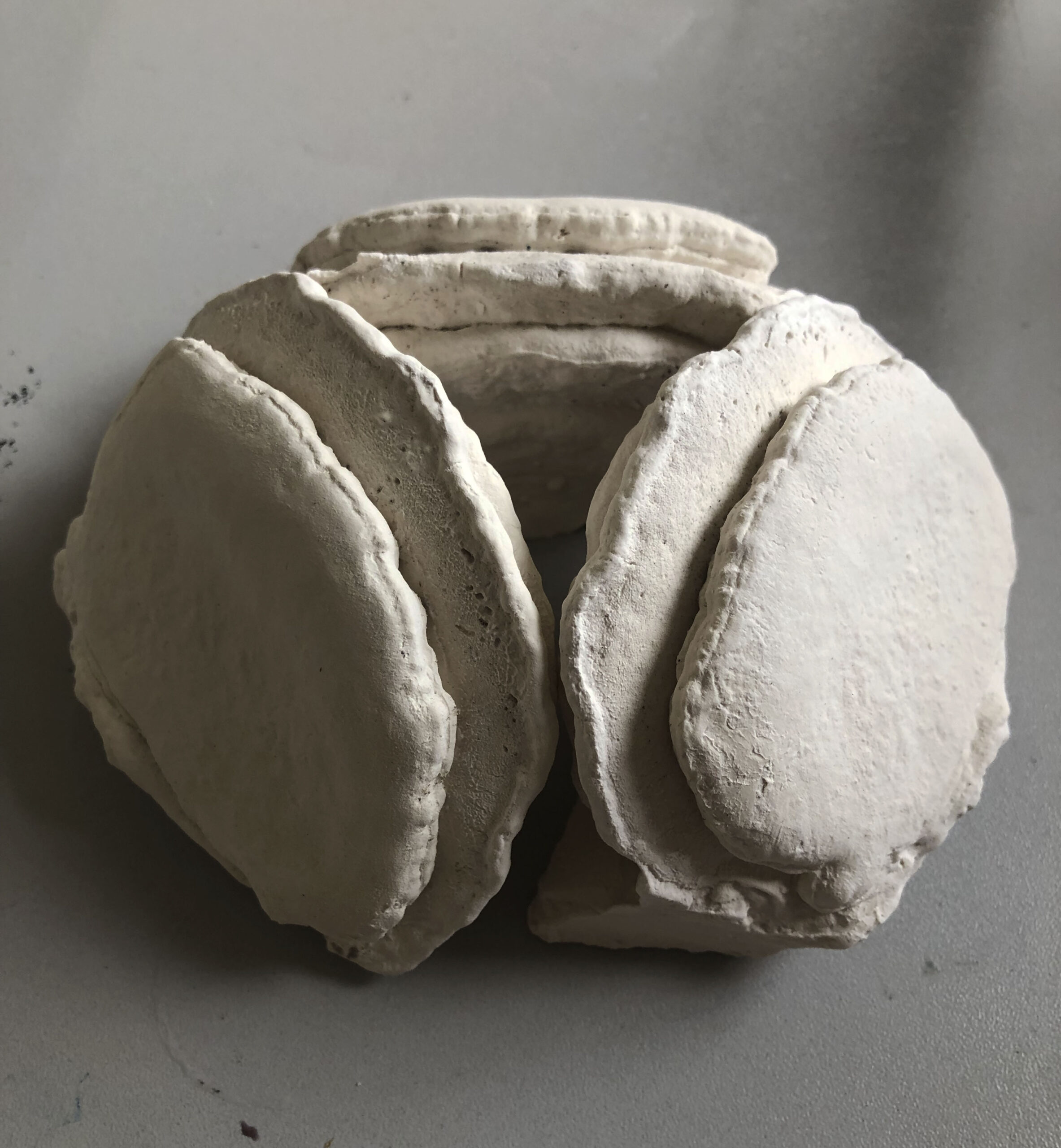
Plaster casts of a bracket mushroom.
Exploring the fragility of nature and its preservation.
For this piece I cast the same mushroom three times. Playing with the concept of manufacturing something that is a one off. Nature is not something that can be replicated, and so in this way this piece is an affront to nature. I have taken something that is individually irreplaceable, and taken that away from it. Mushrooms can reproduce naturally, but still each mushroom will be unique.
This work is a statement that mankind cannot play god to nature. We must let it be god itself.
The triangle placement is reminiscent of the illuminati, commenting on the mysterious ways of mushrooms and how they live. A triangle is also the strongest shape, suggesting that nature is unstoppable and a force to be reckoned with.
Experimenting with different ways of displaying my work, with shelves and frames.
Concept: exploring the balance of nature and humans, and our intertwining connections.
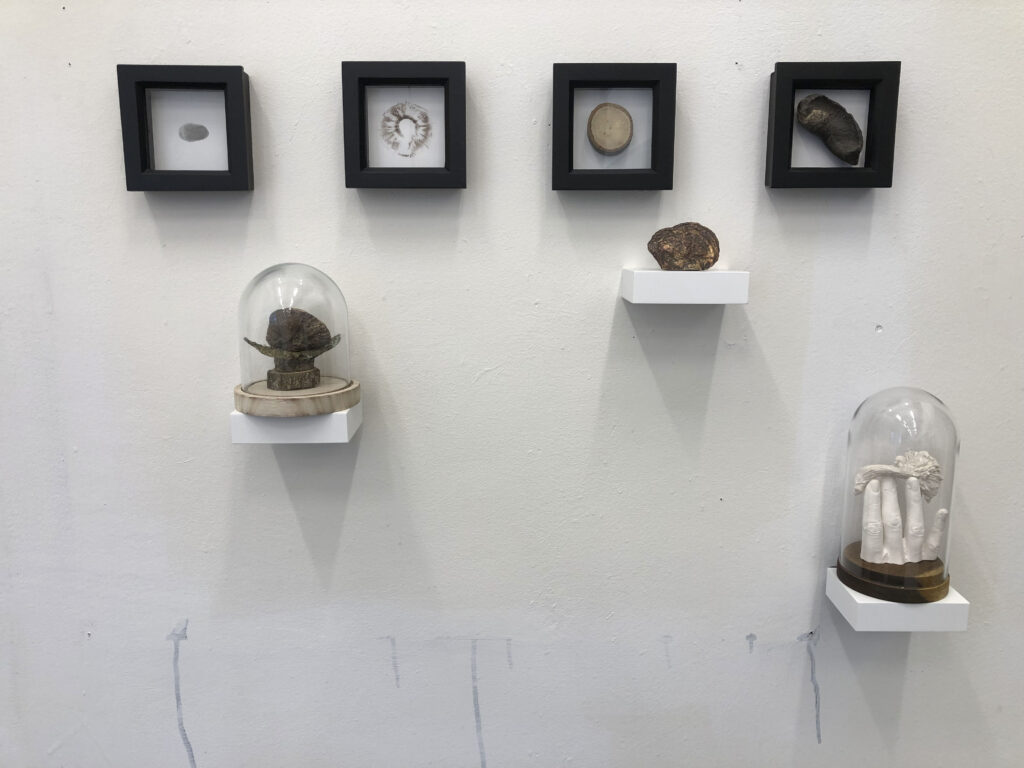
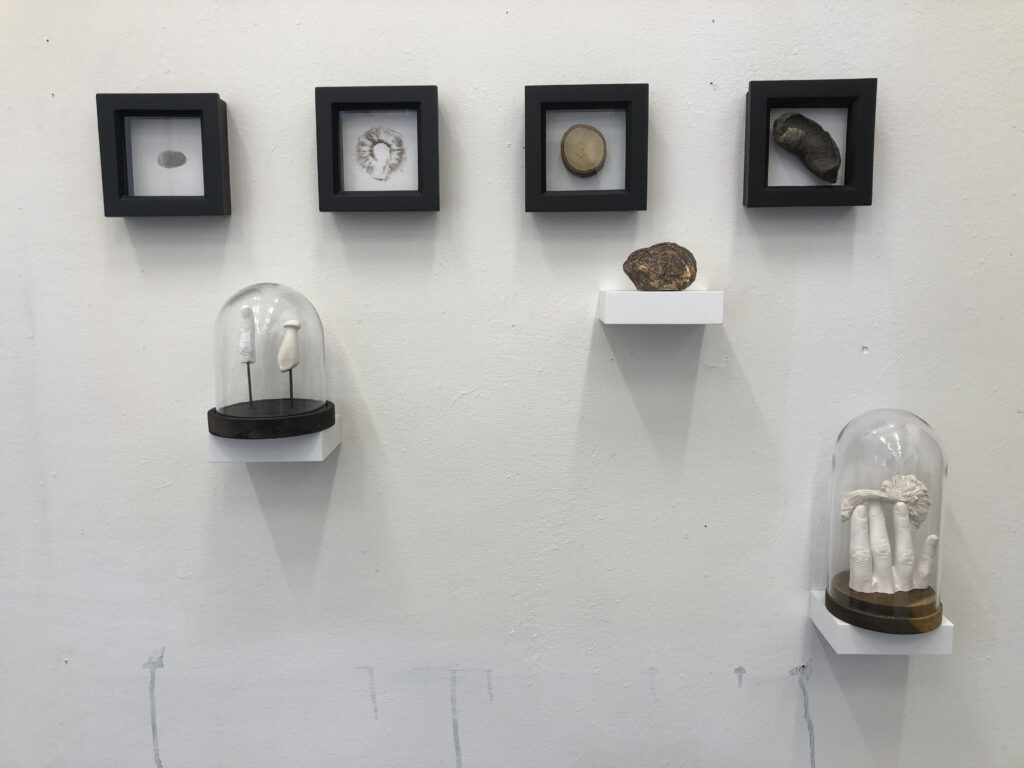
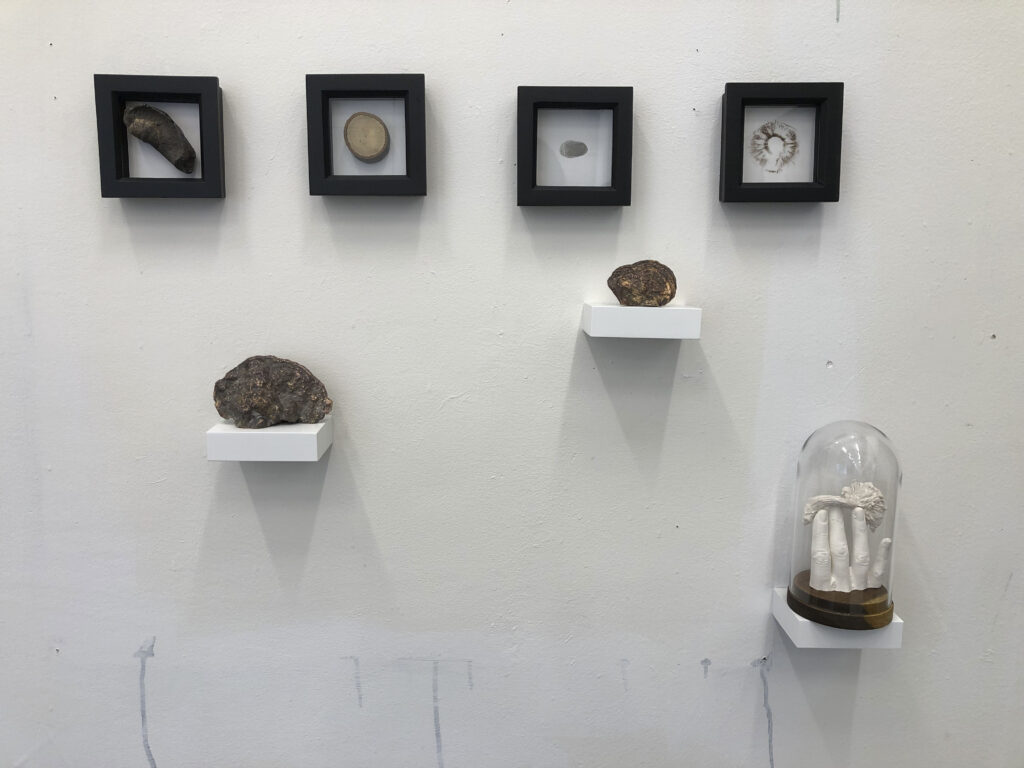
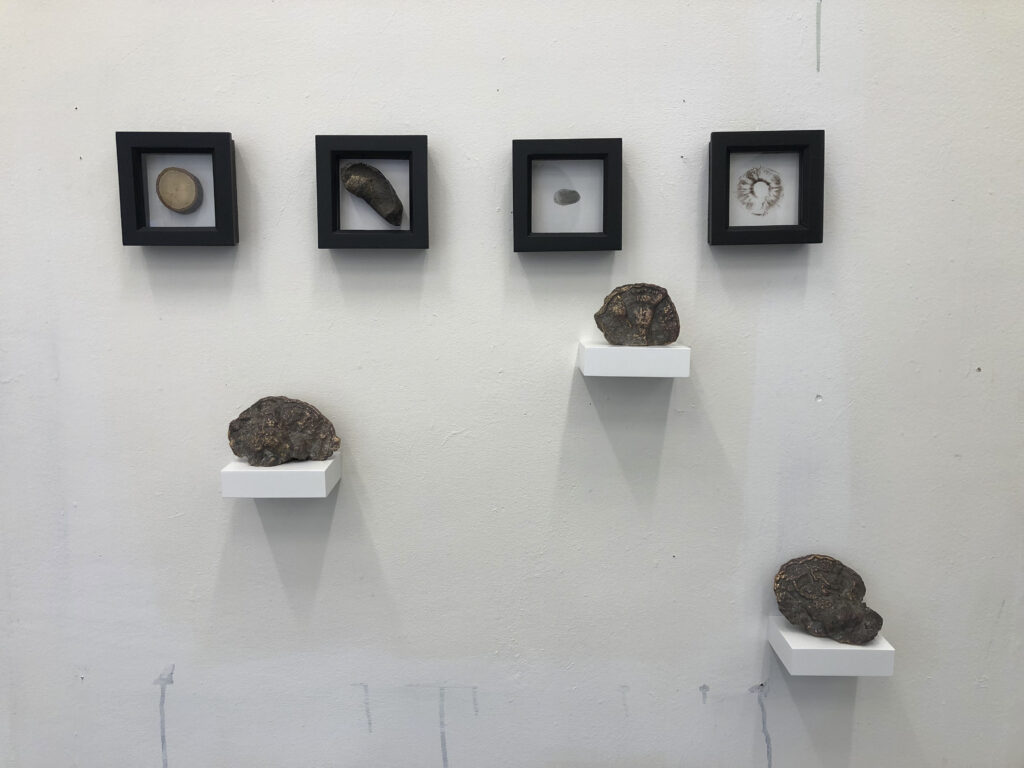
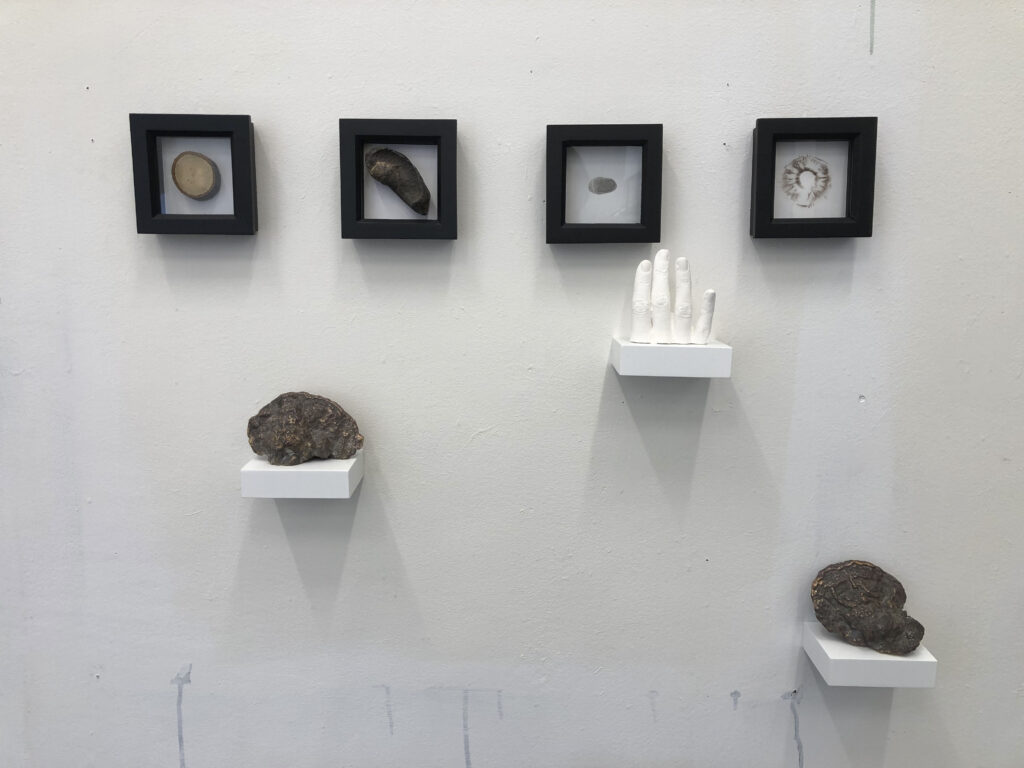
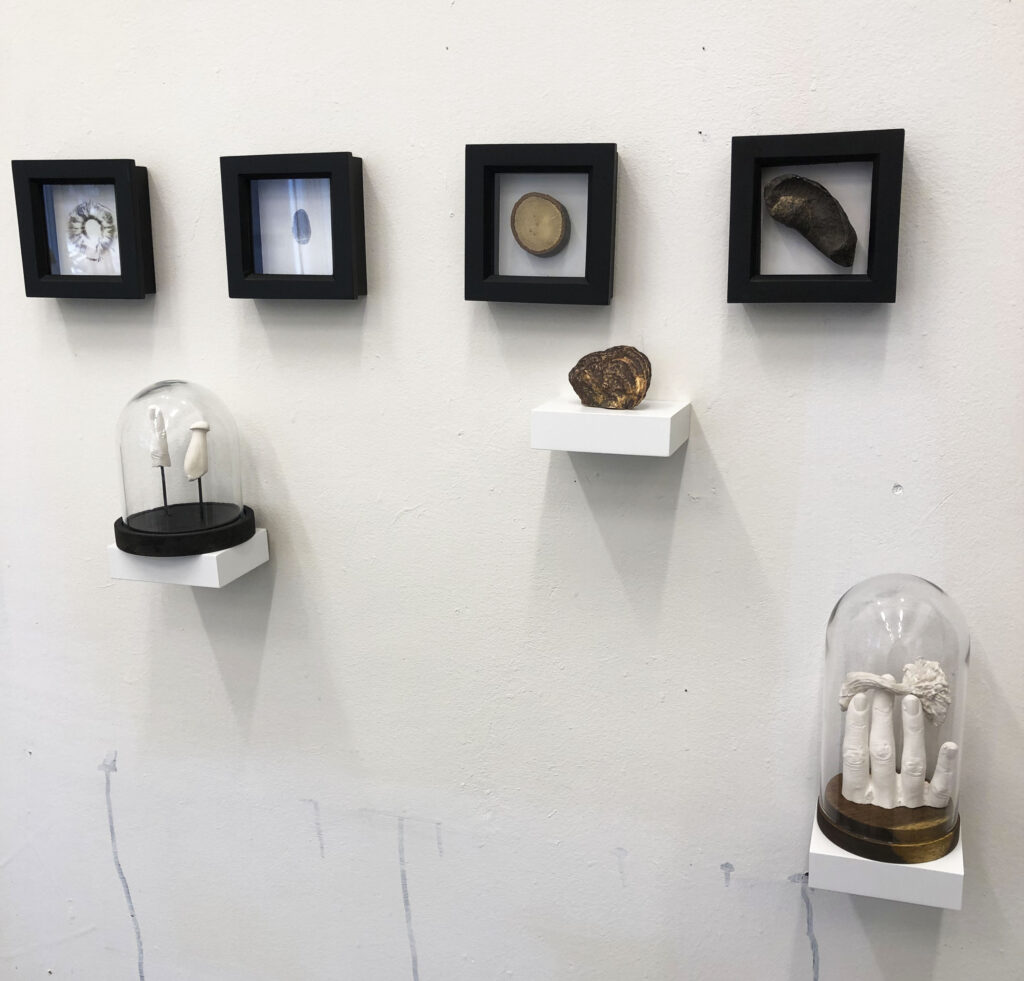
My concept: preserving something that only has a short lifespan. Nature is extremely important and precious to me, and I wanted to reveal that through preserving these fascinating mushrooms in a beautiful medium so that they may live forever.
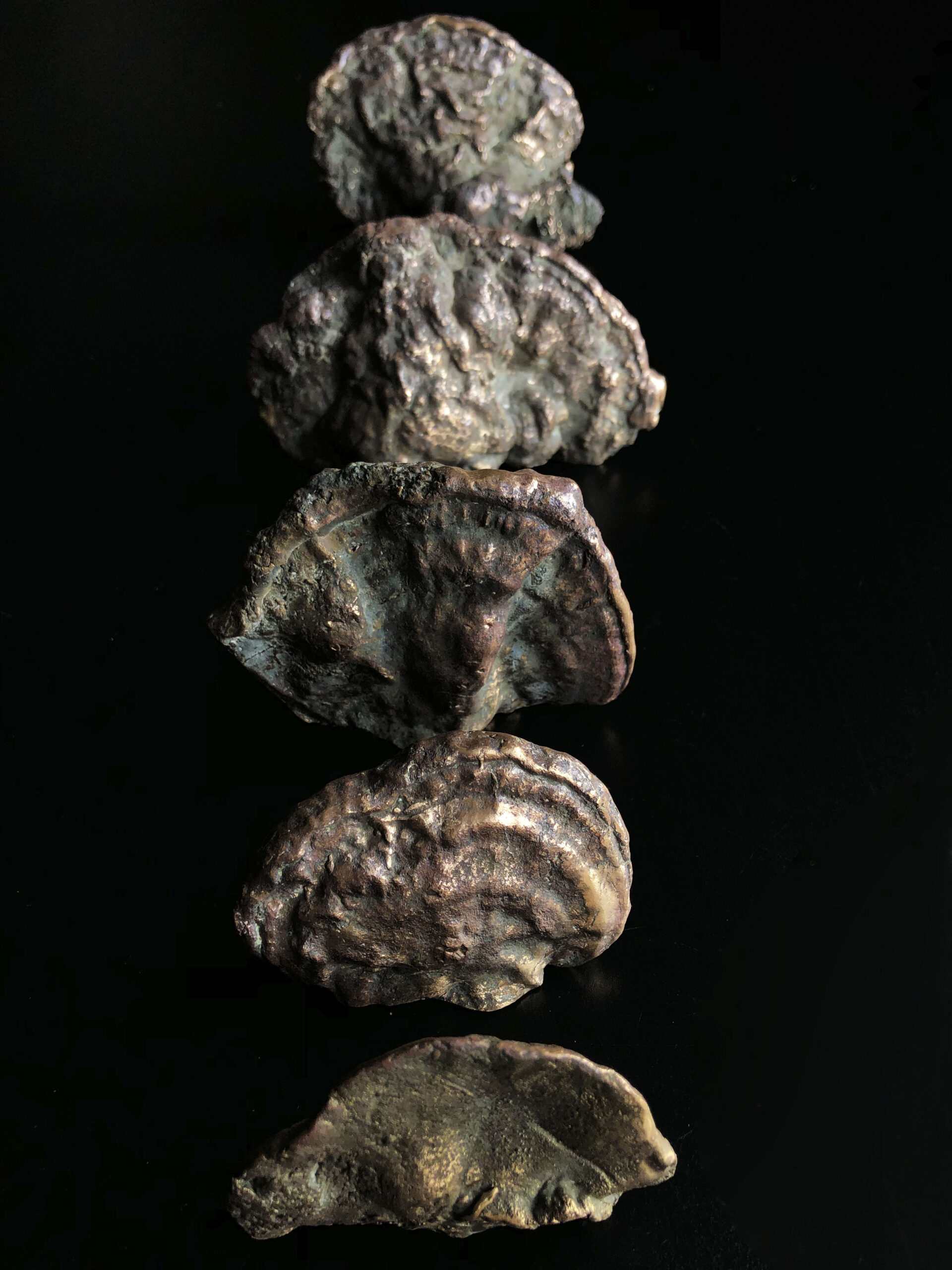
Following on from last term, I went back to bronze casting. For my previous casting, I made several different types of mushroom. I enjoyed learning the process and seeing what worked and what didn’t.
This time around, I intended to cast more of the same mushroom to make a complete set. I was going to buy some mushrooms from the supermarket as mushroom season was no longer happening. However, I was walking the day before my casting session and happened to come across a fallen tree that had several bracket mushrooms growing from it. I couldn’t believe my luck, and so proceeded to cut some of the mushrooms from the tree. I ended up casting five of these mushrooms in total, which I believe to be Southern Bracket fungi.
The outcome of the cast was successful and I am very pleased with their outcome. They retained their textures and even some parts of the tree they were growing on came out well in the casting process. I proceeded to finish them with a Dremel to bring out some of the beautiful warm golden colour of the bronze.
I wanted them to look beautiful and golden, yet still keep their natural textures, bumps and scars. All of these elements are part of nature and deserve to be seen and appreciated.
I am now experimenting with different ways of displaying these sculptures. This has led me to audio work, plaster casting and moving image. I am interested in bringing out the beauty and peace that I find in nature through this work, and I am trying many different ways to try and achieve this in a way I feel is most successful.